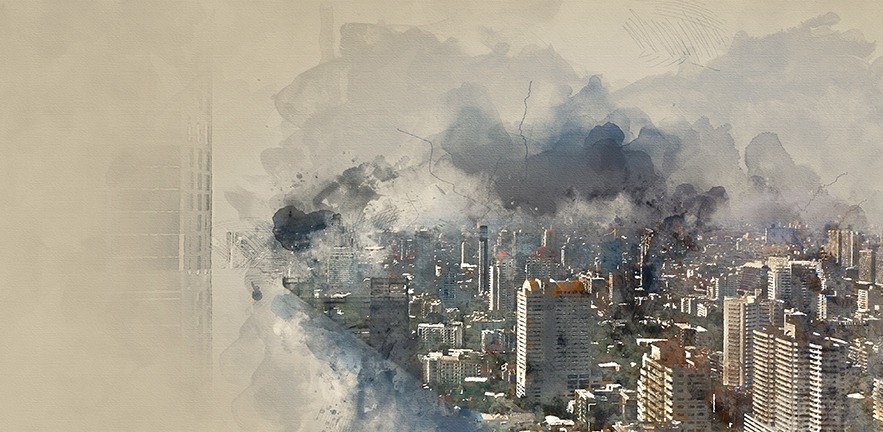We’ve long known that pollution makes people sicker, but a new study from the University of Cambridge shows that it also harms innovation and human-capital composition.
It’s long been known that air pollution makes people and communities sicker, but a new study from the University of Cambridge finds that pollution also makes societies less creative.
The study based on data covering almost all industrial firms engaged in science and tech in China finds that air pollution decreases innovations that demand a high level of creativity such as inventions while increasing low-level innovations such as design patents.
The paper finds further that air pollution affects firm-level human capital composition by reducing the share of employees with PhD and masters degrees while increasing the share of those with bachelor’s degrees, which ties into greater mobility for people with higher educational qualifications.
North-south heating divide in China made study possible
The study is made possible by a decision by Chinese authorities in the 1950s known as the Huai River heating policy – which due to resource constraints provided coal-based heating only for cities north of the Huai River, while heating in relatively warmer cities south of the Huai River relies primarily on electric power. The Huai River runs west to east for about 700 miles, and together with the Qin Mountains is often seen as the dividing line between north and south China.
While previous studies have linked air pollution to labour productivity, the authors believe the new paper is the first to study how environmental pollution affects firm-level human capital over the long run. The paper – entitled “Air pollution and firm-level human capital, knowledge and innovation” – is part of the Cambridge Working Paper in Economics series.
Gap in innovation highlights importance of environmental quality

“Our study shows how air pollution has created a gap in innovation, knowledge and human capital between the north and south of China, and this highlights how environmental quality is a crucial element in productivity, welfare and progress in our knowledge-based economy,” says co-author Kamiar Mohaddes, Associate Professor in Economics & Policy at Cambridge Judge Business School.
“The study utilises data on firms north and south of the Huai River to show with statistical significance that firms operating in southern areas with better air quality produced higher-quality innovations, and this has important implications for the workplace, communities and broader society.”
The study is based on a novel database, Surveys of Science and Technology Activities of Industrial Firms, which covers firms representing more than 90% of industrial knowledge and innovation across 46 industries across China. This data is combined with information on pollution from the Earth Observing System of the National Aeronautics and Space Administration (NASA) to uncover the causal effect of air pollution on firm-level R&D human capital.
The difference in air quality between China’s north and south became substantial after several decades, and “since this pollution gap has been accumulated for more than 50 years it enables us to explore how the pollution stock affects firm-level human capital over a long period,” the study says.
Burning coal releases particulate matter, nitrogen dioxides, sulfur dioxides and many other pollutants into the air. Emissions of the primary pollutant, particulate matter, are higher if the coal is not sufficiently burned, and generators in China frequently work under low-load conditions in which more coal is burned for each unit of heating.
How patents differ in innovation level
The study focused on firms in the south and in the north which are immediately adjacent to the Huai River, so the “social, economic, and geographic conditions are statistically continuous, and the only existing significant discontinuity is in air pollution”.
To better assess firms’ innovation quality, the study divides patents into 3 different types: invention, utility model, and design patents. Invention patents are regarded as high-quality innovations because they relate to technological breakthroughs and upgrades in process, and are subject to extensive examination of their originality and novelty. Utility model and design patents do not necessarily go through such examination, and design patents (such as for a new shape, colour or pattern of a product) are regarded as relatively low-level innovations.
The study
The study – entitled “Air pollution and firm-level human capital, knowledge and innovation” – is co-authored by Tiago Cavalcanti, Professor in the Faculty of Economics at the University of Cambridge and Fellow of Trinity College; Kamiar Mohaddes, Associate Professor in Economics & Policy at Cambridge Judge Business School and Fellow of King’s College, Cambridge; Hongyu Nian, a Visiting PhD student from Shanghai Jiao Tong University who has worked with the Energy Policy Research Group at Cambridge Judge Business School; and Haitao Yin, a Professor of Economics at Shanghai Jiao Tong University.


